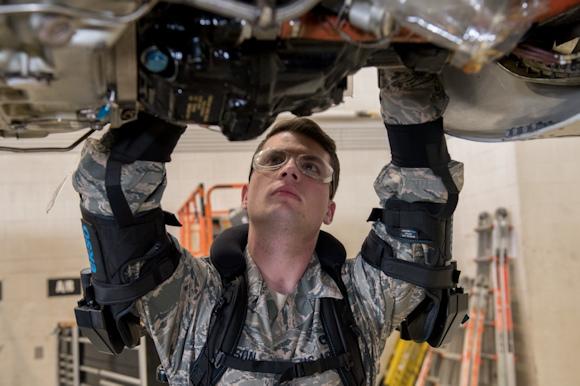We have repeatedly dealt with the topic of Artificial Intelligence (IA) on these pages and how it has already begun to considerably influence our present.
So many pages are waiting to be written on a subject that threatens to change not only our life but also the very idea we have of us as human beings.
We have updated our readers on the progress being made and on what we are expecting in the short term - up to the 2050 -, trying to provide the most comprehensive picture of the situation on a passage of our evolution after which we will hardly continue to be what we were .
In this story of ours, we have repeatedly defined the so-called fourth industrial revolution, describing the state of the art in the various development sectors, with a particular eye to China, which contends with the US the position of leadership not only in the field of research and development (it is first in number of patents filed), but also in that of industrial implementation, as evidenced by its world leadership in 5G infrastructures.
The new industrial revolution will also transform the military field.
Already today, talking about conventional linear conflicts means being out of time. Modern wars have become hybrids, characterized by a multiplicity of actors and offensive systems remotely comparable to the classical ones.
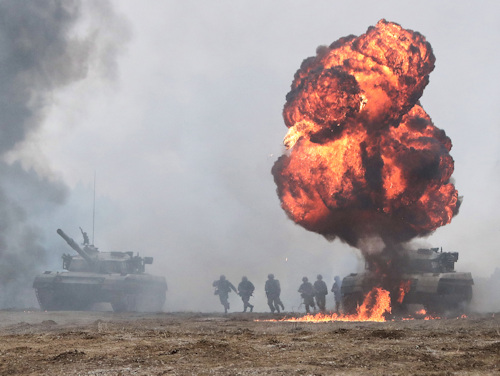 If in the recent past, the balance between powers, and therefore peace, rested on the monopoly that these suns had of nuclear weapons systems - mutually assured destruction (MAD) constituted the first deterrent against any form of reckless adventurism -, the future that awaits us, with its peculiar technological talent, will facilitate what Klaus Schwab1 calls democratization of offensive capabilities, dramatically expanding the field of potential attackers.
If in the recent past, the balance between powers, and therefore peace, rested on the monopoly that these suns had of nuclear weapons systems - mutually assured destruction (MAD) constituted the first deterrent against any form of reckless adventurism -, the future that awaits us, with its peculiar technological talent, will facilitate what Klaus Schwab1 calls democratization of offensive capabilities, dramatically expanding the field of potential attackers.
Just think of using it for offensive purposes2 or trojan, the type used by the US and Israel to sabotage the Natanz Iranian nuclear power plant in the 2010, and the now proven possibility that tools like these can put a public organization and even a state out of action.
The current weapon systems will be progressively replaced by autonomous systems, which thanks to artificial intelligence will be able to choose options - even of a kinetic nature - without human intervention, based on the analysis of environmental situation data and operating.
In this field, China is pushing a lot, deprived as it is of those ethical constraints and conditionings that characterize the Western leader. As we have already amply written, the Beijing doctrine foresees the use of autonomous Command and Control systems (C2) equipped with IAs up to the operational level, the one to which the direction of the operations on the ground is assigned.
The next weapon systems will be largely autonomous, capable of ensuring 24 hours business continuity for 7 days, and will ensure those who use them enormous economies of scale and adherence to the task received.
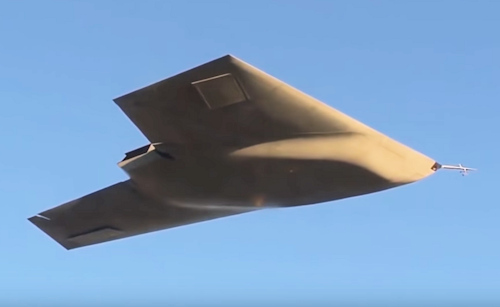 Furthermore, the use of such systems will avoid putting the lives of its citizens at risk: aspect of particular relevance in the field of western nations.
Furthermore, the use of such systems will avoid putting the lives of its citizens at risk: aspect of particular relevance in the field of western nations.
But let's see what the main technologies that will characterize the battlefield in the coming years will be.
Certainly i drones, machines able to operate already in the three dimensions.
Il Raptor3, developed by the BAE is a clear anticipation of future weapon systems. Able to perform intercontinental flights, the platform can carry out a variety of missions of various kinds without human assistance.
The drones are experiencing a huge development also in the civil sector, with the USA in a leading position in the field of design and production, followed by China, which recently introduced specimens capable of operating in the great ocean depths4.
That of autonomous robots represents the sector that more than any other will develop, considering that robotics will constitute the most important branch of military technology of the XXI century.
Machines all-time able to operate anywhere without human intervention, for the most disparate tasks.
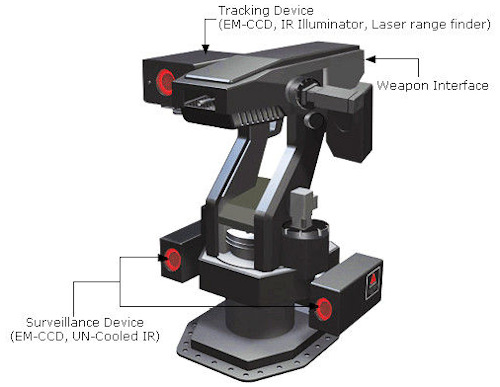 Some prototypes are already known, like the Robot Samsung SGR A15 deployed along the border between the two Koreas, able, independently, to identify a moving target, raise the alarm and fire against any intruders who cross the DMZ. The system, equipped with a thermal chamber, has a diurnal viewing depth of 4 km (the night is halved), and is able to distinguish humans from animals with image analysis.
Some prototypes are already known, like the Robot Samsung SGR A15 deployed along the border between the two Koreas, able, independently, to identify a moving target, raise the alarm and fire against any intruders who cross the DMZ. The system, equipped with a thermal chamber, has a diurnal viewing depth of 4 km (the night is halved), and is able to distinguish humans from animals with image analysis.
In the case of a plurality of subjects moving in the assigned area, it is also programmed to monitor what first enters the given surveillance sector, to which, before firing, it directs a voice warning signal.
Soldiers will have equipment and weapon systems connected to the network (Internet of things, IoT) that can provide information on the battlefield in real time to C2 processing centers. They will wear exoskeletons that, appropriately configured, will increase the load, fire and progression capabilities of the operators on the ground, de facto constituting a network of sensors that will continuously send data to be analyzed in the rear with the help of AI.
The exoskeletons will provide bulletproof protection, will be equipped with power multiplier controls, night vision and infrared systems, and for monitoring vital signs.
Some prototypes, like the American Talos6 and the Russian Ratnik 37, provide a clear anticipation in this regard.
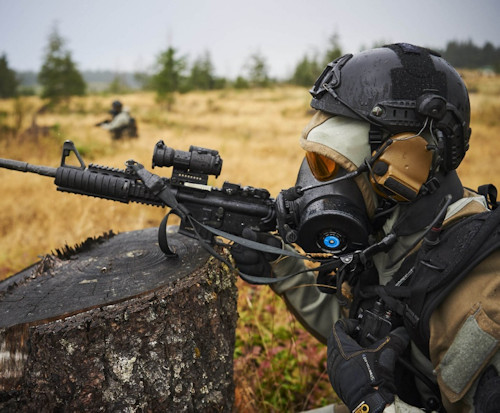 New biological and biochemical weapons will also be introduced as a result of research in the biotechnology, genetics and genomics fields8.
New biological and biochemical weapons will also be introduced as a result of research in the biotechnology, genetics and genomics fields8.
They will be helped by the progress made possible by the use of nanotechnologies, which will make available, at low cost, new materials that are enormously more resistant, such as graphene, made up of two-dimensional carbon atoms, a hundred times more resistant than steel but far more thin.
The spread of additive production methods, such as 3D printers, that starting from a digital model are able to make any kind of product, layer by layer, will facilitate the simplification of the entire industrial cycle and will lay the foundations for an increasingly adherent military logistics to the needs of fighters on the ground, thanks to the possibility of producing, using cloud projects, (parts of) weapon systems, complete vehicles and the equipment necessary for combatants. No more thousands of miles away, but near the fighting line.
The future wars, as already mentioned "hybrid", will be played by a multiplicity of actors, mostly non-state, on multiple levels - social, economic, political -, and in the five domains: land, sea, air, cybernetics, space, including the - transversal - information.
In the latter, social media will be the main terrain in which to operate to direct the adversary's public opinions, breaking it up inside.
 In our age, on the other hand, social groups are no longer formed on the basis of territorial, cultural and linguistic belonging, but essentially on the sharing of ideas, experiences, projects, mediated by social media. Who will be able to control these extraordinary communication tools, will control the hearts and minds of the people and with them, the center of gravity of the states.
In our age, on the other hand, social groups are no longer formed on the basis of territorial, cultural and linguistic belonging, but essentially on the sharing of ideas, experiences, projects, mediated by social media. Who will be able to control these extraordinary communication tools, will control the hearts and minds of the people and with them, the center of gravity of the states.
In the coming years, the progressive introduction of the new weapon systems will also confirm the essence of the fourth industrial revolution in the military sector, the result of the synthesis, in all domains - physical, biological, digital - of combined use, of the network, of artificial intelligence and BIG DATA.
The lethality of the new weapons, especially the non-kinetic ones, will increase in parallel with the increase in the power of the microprocessors (doubles every 18 months) and the volume of the BIG DATA (doubles every 3 years), used to "feed" the calculation systems managed by artificial intelligence.
Then the new materials will do the rest.
1The fourth industrial revolution by Klaus Schwab. Ed. Penguin 2016.
2To learn more: https://it.wikipedia.org/wiki/Stuxnet
3https://en.wikipedia.org/wiki/BAE_Systems_Taranis
4http://www.difesaonline.it/mondo-militare/5-km-di-profondità-la-first-base-drones-oceanic
5https://www.globalsecurity.org/military/world/rok/sgr-a1.htm
https://www.youtube.com/watch?v=HL7VBPsgs20
6https://www.youtube.com/watch?v=GBGcRh08lDM
7https://www.youtube.com/results?search_query=ratnik+3+esoscheletro
8Genetics is the branch of biology that studies genes, heredity and genetic variability in living organisms, focusing on understanding the mechanisms underlying these phenomena. Genomics is a branch of genetics that deals in particular with the study of the structure, content, function and evolution of the genome of living organisms, especially the human one. It is the genomics that allowed the complete mapping of the human genome, successfully concluded in the 2001.
https://medicinaonline.co/2018/01/29/differenza-tra-genetica-e-genomica/
Photo: US Air National Guard / Ministry of National Defense of the People's Republic of China / BAE Systems / web / US Army / US Air Force

